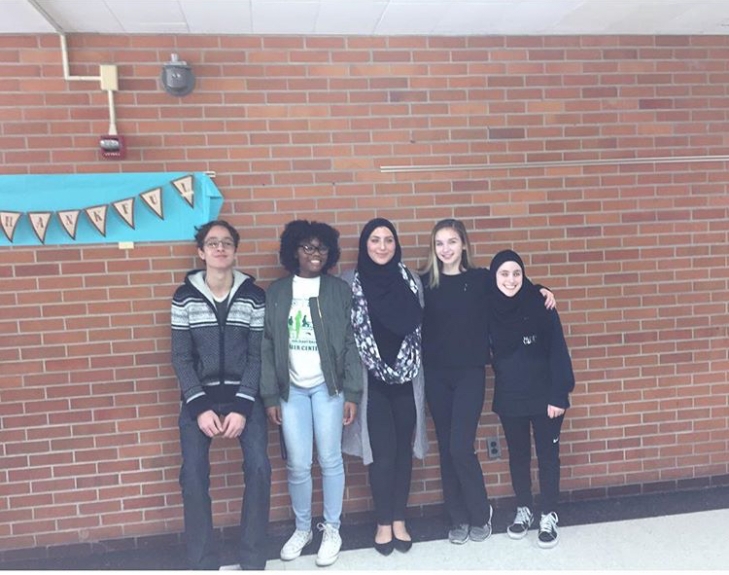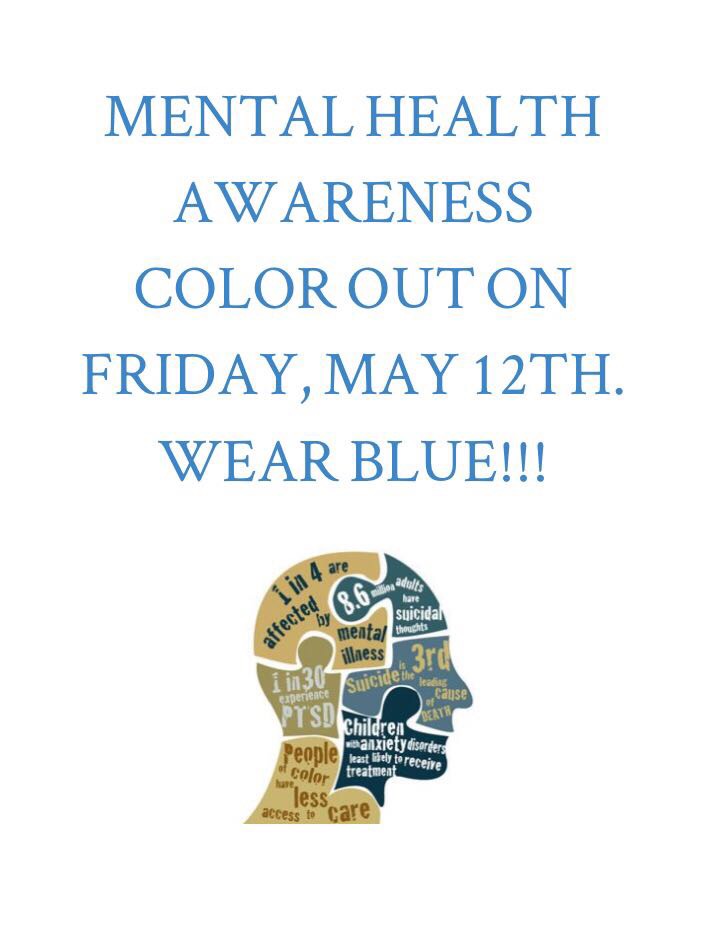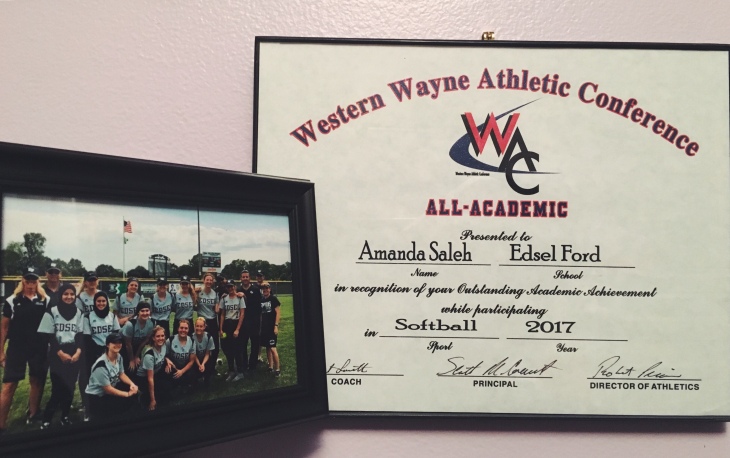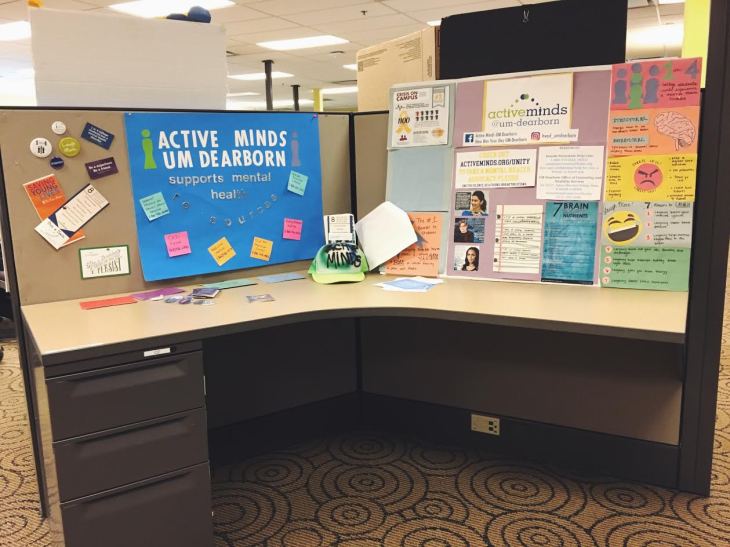Most people see big schools as a means for more diversity, more opportunity, and a more enriching environment. However, this argument loses its validity as it is analyzed more in depth.
Bigger schools means more people, but does it really mean more diversity? What is defined as “opportunity”? And who does the environment benefit – everyone or only a select few?
Edsel Ford High School is located in Dearborn, Michigan; and it’s one of the three high schools in the city.
There’s a catch to this school, though. It’s the smallest with about 1,378 enrolled students. The other high schools are Fordson High School with an enrollment of 2,447; and Dearborn High School with an enrollment of about 1,877.
Here’s why I think that going to smaller schools is just as good or even better than going to large schools, and why I think I was able to grow and succeed in ways that I did.

Edsel Ford High School’s Interact Club 2016-2017
[some members not present]
As someone who struggles with anxiety and didn’t involved socially until my second year of high school, it was difficult to reach out. I knew that I wanted to help people, and I wanted to get involved. So, I thought “how?” Interact Club had just started in 2015, and I was a sophomore. I decided to go to the first meeting; and since the school was small and not many people were involved yet, it was somewhat easy for me to adapt. I found my place fairly quickly; and although it was a struggle, it got a little better with time.
Interact Club was the starting point of my involvement, and it helped me grow and develop skills that I would then use for the other clubs and programs that I was involved in. By my senior year, I had already served a couple of years as President of the club, and it had grown. My team and I had raised hundreds of dollars for different organizations and donated various items to different places in need.

Edsel Ford High School’s Social Justice Club Officers 2016-2017
I was able to engage in social justice work as well. Joining around the middle of my sophomore year, I was able to earn a position on the e-board by my senior year and help plan events and lead meetings. It was an honor to do this and get an inside scoop into the way that things are done. When you are a part of work like this, you realize the diversity that your school and city has.
In actuality, Edsel Ford is the smallest, yet it is the most diverse.
*Arabs are considered "white" on chart(s) Fordson High School [upper left] // 2015 Dearborn High School [bottom left] // 2015 Edsel Ford High School [enlarged] // 2015
The Black and Latinx communities represent about 2% of Fordson High and 10% of Dearborn High, while Edsel Ford High has a total of 15% that make up the Black, Latinx, and Asian communities.
Based on the 2015 statistics, it is shown that a bigger school certainly does not mean more diversity. And it can surely be inferred that these numbers have slightly increased over the past three years.

Mental Health Awareness Flyer that spread across the three different high schools in Dearborn over text and social media. // May 12, 2017
More opportunity means more ability to reach out to people, especially those not attending the same institution. With a passion for mental health, I wanted to raise awareness for it in some way. Luckily, the idea of a color-out was brought up in December of 2016 at a Potluck Event at Fordson High School when their Interact Club met with ours.
We planned to do it sometime in the spring; and before the idea was forgotten, I reintroduced it to the group and made a flyer. Edsel Ford Interact Club members and I worked together to get it approved within the school and proceeded to pass it around to different people. It had reached a decent amount of students from the different high schools!

Edsel Ford High School’s Varsity Softball Team 2016-2017 // Personal award in being a student-athlete and maintaining a good GPA
As someone who’s always been interested in baseball, joining softball was a dream of mine that I didn’t know when I’d actually try to make it come true. I waited and waited, until junior year of high school and tried out. At the time, Edsel Ford had some of the best players in the city; so, there was no way that I thought I’d ever make it on a team. But it being a small school and still having a junior varsity (JV) team, it gave me the right to try.
If you know high school sports, then you know that usually, only freshmen and sophomores get placed on JV, unless they are really skilled (which can bump them up to Varsity). This means that juniors and seniors get placed on the Varsity team, but I was a junior, and I was not getting placed on Varsity because it was my first time playing; so, why didn’t I get cut at tryouts?
We can use the logic that they were short of players so I had a way in, but even if that’s the case, doesn’t that matter?
Smaller schools means less people, and less people means room for growth and room to find your potential.
Needless to say, I made it on Varsity my senior year… and they had more players than needed on the team.
//
Now attending university, UM-Dearborn is a fairly small campus with an enrollment of 7,141 undergraduate and 1,990 graduate students. Also, its ranking is #1,229 for ethnic diversity, which means that its above the national average with 67.5% White, 9.6% Black/African American, and the rest being Asian, Hispanic/Latinx, International, Unknown, and Other.
Schools like UM-Dearborn allow for everyone to follow their own path and excel at their own pace. When you attend a large school like an Ivy League, for example, it’s hard to “stand out” and can be even harder to learn and make friends. Not only is the pressure much worse, but it lacks the tightly-knit community that smaller universities encompass at the root of their existence. “In small schools, relationships between students and adults are strong, trusting, and ongoing” (Grauer), which is true particularly in classrooms and the connections that we make at events and student organizations (i.e. faculty, guests, advisers, etc).

Lyceum’s Fall 2017 Release Party at UM-Dearborn
I attended Lyceum’s Release Party in the Fall and had the opportunity to submit a piece, which was published! Had this been a larger university and more submissions, the selection process for writings and art pieces would have been much more competitive.

UM-Dearborn’s Active Minds cubicle // taken Jan. 21, 2018
Active Minds is a student organization at UM-Dearborn that I’m a part of, and the group is somewhat small, since many of its members have recently graduated. However, I still had the opportunity to hold the Secretary position last semester, and this semester, I became President!
When it comes to analyzing opportunity, it’s not about which school has the most organizations or sports teams or programs. It’s about which schools have the potential to allow the underdog to grow and lead. In my case, I may have been lucky in the process, but the work that I’ve put in to try to get to where I am today, personally and academically, was very extensive over the years. With that said, I’m still not done. Frankly, I don’t think I’ll ever be.
And so – my journey continues.
Learning and growing is a never-ending process, but when it comes to weighing your options, don’t just focus on the school or program or whatever it is because of its ranking or social prestige, but focus on what it provides for everyone. More specifically, focus on what it will provide for you.
Source(s):
Grauer, Stuart R. “Small Versus Large Schools: The Truth About Equity, Cost, and Diversity of Programming in Small and Large Schools.” Community Works Institute, https://www.communityworksinstitute.org/cwjonline/essays/a_essaystext/grauer_smallsch1.html. Accessed 30 January 2018.



Hey Amanda!
Your essay is very well written! I totally agree with you that smaller schools give students more opportunities. I went to high school at the Plymouth-Canton Educational Park with 6,000 other students. This made it hard to keep in touch with a lot of my friends since it was likely that I wouldn’t see them after I had that one random class with them first semester freshman year, but it did force me to get to know a lot of people. Because that was a larger school, it was hard to get chosen for various activities because of the large amount of students with similar skills and talents. Similar to you, it was hard for me to get involved with activities that involved a large amount of people, I worked better in smaller groups. A larger school may give the illusion that there are more opportunities like various clubs and sports, but it is hard for someone who isn’t very outgoing to get involved with a ton of people.
LikeLike
Hello Amanda, your essay was very well written, pleasing to the eye and incredibly interesting. I completely agree with your statement that a smaller schools leaves room for a person to develop and I liked that you used your own experience for you argument, giving your readers a chance to get to know you a little bit more.
LikeLike